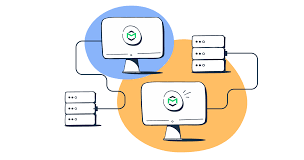Email investigations are critical in various contexts, from cybersecurity incidents to legal proceedings. Unraveling the digital trail within emails requires sophisticated tools and methods that go beyond mere content analysis. In this comprehensive guide, we explore the tools and methods employed in email forensics investigation, shedding light on the intricacies of digital forensics.
Email Investigation Tools
1. Email Header Analysis Tools:
-
MXToolbox: MXToolbox offers a range of tools, including an Email Header Analyzer, enabling investigators to decode and analyze the technical details within email headers.
-
EmailHeader.org: This online tool provides a simple interface to analyze email header, revealing valuable information about the sender, path, and routing of an email.
2. Metadata Analysis Tools:
-
ExifTool: While commonly used for image metadata, ExifTool can also extract metadata from email attachments, offering insights into the origin and editing history of files.
-
Metadata2Go: This tool specializes in extracting metadata from various file formats, aiding investigators in understanding the context and source of attached files.
3. Email Forensic Software:
-
EnCase: EnCase is a comprehensive digital forensic solution that includes features for email analysis. It enables investigators to examine email content, attachments, and metadata.
-
Forensic Toolkit (FTK): FTK is a robust forensic software that supports email analysis, allowing investigators to recover deleted emails, analyze headers, and extract relevant information.
4. Network Forensics Tools:
-
Wireshark: Wireshark is a widely used network protocol analyzer. In email investigations, it can help analyze network traffic to understand communication patterns and identify potential threats.
-
NetworkMiner: This tool is designed for network forensics and can be valuable in email investigations by capturing and parsing data from the network traffic.
5. Digital Forensic Suites:
-
Autopsy: Autopsy is an open-source digital forensic platform that supports email analysis. It aids investigators in examining email artifacts and attachments within a broader forensic context.
-
SANS SIFT Workstation: The SANS Investigative Forensic Toolkit (SIFT) Workstation is a powerful platform equipped with various tools for digital forensics, including email investigation.
6. Steganography Detection Tools:
-
StegExpose: In cases where emails may contain hidden information using steganography, StegExpose helps in detecting and analyzing potential hidden content within images.
-
OutGuess: OutGuess is a steganography tool that investigators can use to uncover hidden messages within image files attached to emails.
Email Investigation Methods
1. Email Header Analysis:
-
Raw Header Examination: Investigators often start by examining the raw email headers to extract information such as IP addresses, server paths, and timestamps.
-
Decoding Techniques: Using decoding techniques to unveil encoded information within headers, providing a clearer understanding of the email’s journey.
2. Metadata Extraction:
-
Sender and Recipient Details: Extracting sender and recipient email addresses from metadata to verify identities and understand the communication network.
-
Timestamp Analysis: Analyzing timestamps to establish the timeline of email communication and identify any anomalies or suspicious patterns.
3. Content Analysis:
-
Keyword Search: Conducting keyword searches within email content to identify relevant information related to the investigation.
-
Attachment Examination: Scrutinizing attachments for potential evidence, including files, images, or hidden content that might be part of a malicious payload.
4. Deleted Email Recovery:
-
Forensic Imaging: Creating forensic images of storage devices to preserve the original state of evidence, facilitating the recovery of deleted emails.
-
File Carving: Employing file carving techniques to extract fragments of deleted email data from storage media.
5. Timeline Reconstruction:
-
Correlation with Other Evidence: Cross-referencing email timelines with other digital or physical evidence to reconstruct the sequence of events.
-
Behavioral Analysis: Identifying patterns in the communication data to understand the behavior and intentions of the involved parties.
6. Authentication Measures:
-
Digital Signatures: Verifying digital signatures to ensure the integrity and authenticity of emails, confirming that they have not been tampered with.
-
Sender Verification: Employing authentication methods to confirm the legitimacy of the sender’s identity and detect potential spoofing.
7. Collaboration with ISPs and Service Providers:
-
Legal Processes: Engaging with Internet Service Providers and email service providers through legal processes to obtain relevant data and ensure cooperation.
-
Preservation Requests: Issuing preservation requests to prevent the deletion of critical email data during the investigative process.
Challenges in Email Investigations
1. Encryption and Security Measures:
-
End-to-End Encryption: Strong encryption measures can limit access to the content of emails, presenting challenges in investigations that require content analysis.
-
Security Protocols: Email providers implementing advanced security protocols may restrict access to certain header information, hindering comprehensive analysis.
2. Sophisticated Cyberattacks:
-
Advanced Spoofing Techniques: Cybercriminals continually develop sophisticated techniques to manipulate email headers, requiring constant adaptation in analysis methods.
-
Identity Masking: Criminals may use identity-masking services to obscure their true IP addresses, complicating efforts to trace the source of emails.
3. International Jurisdictional Issues:
-
Cross-Border Investigations: Cases involving email evidence may span multiple jurisdictions, leading to legal and logistical complexities that investigators must navigate.
-
Legal Harmonization: Lack of harmonized legal standards for cross-border data access and sharing poses challenges in international email investigations.
4. User Privacy Concerns:
-
Privacy Regulations: Striking a balance between conducting thorough investigations and respecting user privacy is a constant challenge.
-
Sensitive Data Handling: The presence of sensitive information in email headers and content requires careful handling to prevent inadvertent exposure.
Best Practices for Email Investigations
1. Legal Compliance:
-
Adherence to Privacy Laws: Ensure that the email investigation process complies with relevant privacy laws and regulations.
-
Chain of Custody Documentation: Document the handling of email data to maintain the integrity of the evidence.
2. Documentation of Findings:
-
Comprehensive Reporting: Document findings from email investigations in a clear and comprehensive manner.
-
Expert Testimony: If required, prepare experts to provide testimony on the methodology and findings in a legal setting.
3. Collaboration with Law Enforcement:
-
Law Enforcement Involvement: Involve law enforcement agencies in cases where criminal activities are suspected.
-
Legal Processes: Work with legal authorities to obtain necessary permissions, warrants, or subpoenas for email investigations.
4. Educating Investigative Teams:
-
Training Programs: Provide training to investigative teams involved in the case to help them understand the significance and limitations of email investigation methods.
-
Expert Consultation: Seek expert opinions when needed to assist investigative teams in interpreting complex technical details.
5. Technological Advancements:
-
Continuous Monitoring: Stay informed about advancements in email security, encryption, and forensic tools to adapt to evolving challenges.
-
Research and Development: Invest in research and development to enhance in-house capabilities or collaborate with external experts and organizations.
Conclusion: Navigating the Digital Maze
Email investigations represent a digital maze that requires a combination of advanced tools, meticulous methods, and legal acumen. As technology evolves and cyber threats become more sophisticated, investigators must continually refine their approaches to uncover the digital trail within emails. By leveraging a diverse set of tools, adopting best practices, and staying abreast of emerging trends, investigative teams can navigate the complexities of email investigations, contributing to the pursuit of justice in an increasingly digital world.





